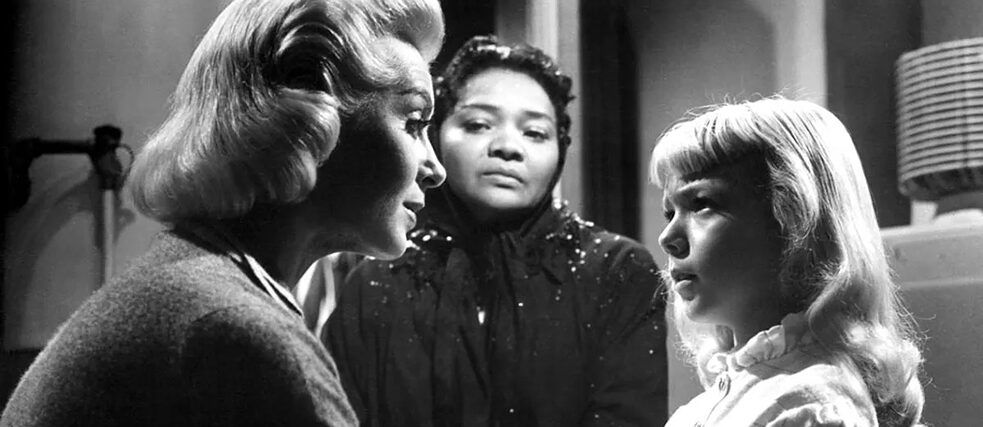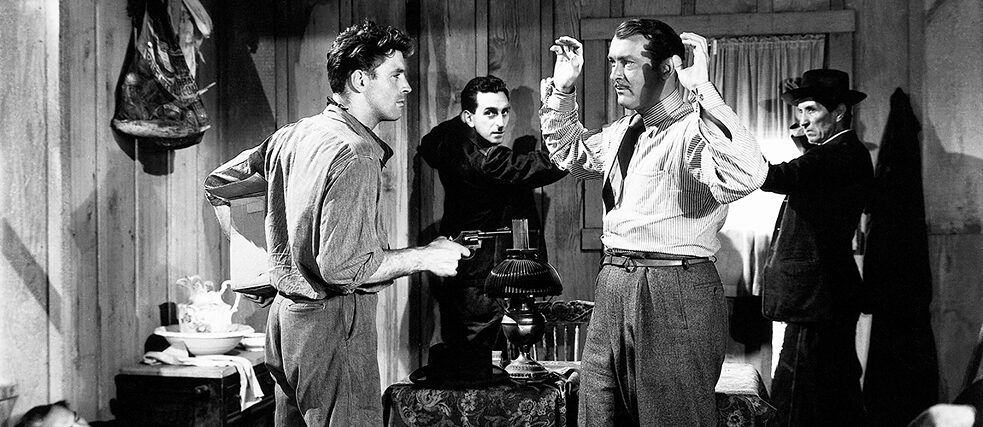Welcome to CineKlub – our new bi-weekly rooftop program for movie lovers. CineKlub is a curated movie program that invites you to explore period pieces, genres or themes. We are honoured to have all films introduced by Peter Scarlet.
CineKlub is a cooperation between our Institute, the U.S. Embassy to the United Arab Emirates and the Goethe-Institut. For more information https://www.goethe.de/ins/ae/en/kul/sup/cin.html
Starting from February, CineKlub will present some Italian neo-realist films, curated and introduced by Scarlet himself.

JANUARY 10, 7PM – IIC Abu Dhabi
LIEBELEI | RSVP: https://liebelei.splashthat.com
Germany, 1933, 88 mins, Directed by Max Ophuls. With Magda Schneider, Paul Hörbiger, Luise Ulrich, Gustaf Gründgens
In pre WWI Vienna, two officers meet a pair of pretty girls (one of them Magda Schneider, mother of Romy Schneider), when they let a pair of opera glasses fall from their box. Based on a story by Arthur Schnitzler, perhaps most famous for his play about loveless sexual encounters, REIGEN (also adapted into LA RONDE, another Ophuls film he made in France decades later), LIEBELEI is one of cinema’s most memorable romances. Famous for the skillful grace of his always moving camera, Ophuls here captures an incredibly touching love story.
LETTER FROM AN UNKNOWN WOMAN | RSVP: https://letterfromanunknownwoman.splashthat.com
U.S.A., 1948, 87 mins. Directed by Max Ophuls. With Joan Fontaine, Louis Jourdan
After LIEBELEI, Ophuls was on the run, and directed films in France, Italy and Holland for more than a decade. When he finally made it to Hollywood, his first experience was an unhappy one. But when the Oscar-winning actress Joan Fontaine came upon a novella by Stefan Zweig set in 19th Century Vienna, she approached John Houseman, who had produced Orson Welles’s CITIZEN KANE. The Viennese setting of Zwieg’s tale reminded Houseman he was a big fan of LIEBELEI, and that led to Ophuls’ being hired to direct LETTER FROM AN UNKNOWN WOMAN, with a script by another Welles associate, Howard Koch. Ophuls brought along Franz Planer, the director of photography of LIEBELEI. The story is about a woman recounting her three meetings with a man (Louis Jourdan), whom she first meets as a teenager and with whom she has a one-night stand years later. Time passes, and she writes him a letter to tell her story – but of course, he doesn’t remember her. Ophuls’ tracking shots communicate both the exhilaration and bittersweet tone of this heartbreaking work.
JANUARY 24, 7PM – IIC Abu Dhabi

THE FINAL CHORD (SCHLUSSAKKORD)
Germany, 1936, 100 min. Directed by Douglas Sirk. With Willy Birgel, Lil Dagover, Maria Tasnádi Fekete
The first melodrama, a tremendous hit in Germany by a brilliant filmmaker who became a master of the genre, the film tells the story of an impoverished young woman is forced to give up her child for adoption and accompany her worthless husband to N.Y. When he shoots himself, she must return to Germany, where she gets a job taking care of the adopted son of Garvenberg, a rich and famous symphony conductor (Birgel), whose wife (Lil Dagover) is having a secret affair with an astrology peddling con man. The conductor’s son turns out to be her own son, and the performance of Beethoven’s Ninth she had heard broadcast on the radio in NY turns out to have been conducted by Garvenberg. The confluence of music, coincidence and drama make for gripping viewing.
Despite having a Jewish wife, Sirk managed to continue to work in the “Third Reich” longer than any of his compatriots in the cinema. In 1939, he went to Holland to shoot a feature, and continued to California, but was unable to begin his long American career there until 1943.

IMITATION OF LIFE
U.S.A. – 1959, 125 min. Directed by Douglas Sirk. With Lana Turner, John Gavin, Susan Kohner, Sandra Dee, Juanita Moore
Lora Meredith (Turner) is a destitute actress with a 6-year-old daughter, Susie. To look after her child, she hires Annie Johnson, a down-and-out Black woman (Moore). Annie has a daughter of her own named Sarah Jane who is slightly older than Susie. Years pass and Lora becomes the toast of Broadway while Annie tries to cope with her light-skinned daughter (Susan Kohner, in a remarkable performance) who yearns to pass as White. Lora, oblivious to the privilege her race affords her, tries to pass as happy. A classic tearjerker, this remarkable film has also been described as the most critical movie to date about race in America. Despite its being Universal Studios’ biggest hit until JAWS, Sirk retired after completing IMITATION OF LIFE and returned to Germany. He lived another eighteen years and saw the reputation of his subversive melodramas inspire a new generation of filmmakers in both Germany, especially Rainer Werner Fassbinder (ALI: FEAR EATS THE SOUL) and the U.S. (Todd Haynes, FAR FROM HEAVEN).
FEBRUARY 7, 7PM – IIC Abu Dhabi

MENSCHEN AM SONNTAG (PEOPLE ON SUNDAY)
Germany, 1930, 73 min. Directed by Robert Siodmak and Edgar G. Ulmer
Helmed by a pair of beginning but eventually famous filmmakers who weren’t yet 30, supported by a pair of equally young and unknown talents who were eventual Oscar winners (Billy Wilder and Fred Zinnemann), this remarkable work portrayed a Berlin nobody had seen before. Its cast was comprised of nonprofessionals, portraying people bored by their work and determined to enjoy the freedom of a weekend day devoted to picnics, beer and flirting. It wasn’t until fifteen years later that the “neorealist” movement in Italy turned cameras on “ordinary” people like these, who pretty much remained themselves. These Berliners acted out a simple, beautifully photographed story that anybody could relate to. And they did – this very early example of independent filmmaking was enormously popular and was shown all over Germany.

THE KILLERS
U.S.A., 1946, 103 min. Directed by Robert Siodmak. With Burt Lancaster, Ava Gardner, Edmond O’Brien, Albert Dekker, Sam Levene
Between 1930 and his arrival in the U.S. more than a decade later, Robert Siodmak directed more than a dozen features in Germany and France. The ten films noirs he made at Universal in the mid- 40s are among the strongest examples of the genre, and this adaptation of a short story by Ernest Hemingway is one of the best. Two thugs show up in a small town diner, announcing they want to kill a gas station attendant whom they call “The Swede”. When he learns he’s being targeted, Burt Lancaster (excellent in his first film), doesn’t seem surprised and he doesn’t seem particularly interested in trying to get away. So the heavies kill him, and the film sets out to explores why. Eventually, as the adage “cherchez la femme” insists, the path leads to Kitty Collins (Ava Gardner), the beautiful woman who betrayed the Swede. Typical of the era in which it was made, the film makes her responsible for the death of its protagonist.
MEET OUR CURATOR AND HOST

A native of midtown Manhattan, Peter Scarlet directed the San Francisco International Film Festival, the first in the U.S., for 19 years, and has also served as Director General of the Cinemathèque Française in Paris, the Tribeca Film Festival in N.Y., the Mar del Plata Film Festival in Argentina, and the Abu Dhabi Film Festival. He has served on film festival juries in more than 25 cities. France’s Ministry of Culture awarded him the rank of Officer in its Order of Arts and Letters.
WHEN HOLLYWOOD HAD A GERMAN ACCENT – GERMAN DIRECTORS AT THE PACIFIC
Even before the emigration of German intellectuals who had to flee Nazi Germany to Los Angeles, natives of Vienna like Josef von Sternberg and Erich von Stroheim came to the U.S. in their youth, and after a while built artistically impressive careers in Hollywood as film directors. The first two already famed German filmmakers who were invited to work there in the 1920’s were Ernst Lubitsch and F.W. Murnau. The enormous success of Lubitsch’s inventive historical epics (MADAME DU BARRY, THE LOVES OF PHARAOH) and sophisticated comedies like THE DOLL led superstar Mary Pickford to bring him to L.A. in 1923. ROSITA (1923), the film they made together, satisfied neither of them, but Lubitsch went on to direct several masterpieces in the U.S. (TROUBLE IN PARADISE, NINOTCHKA, THE SHOP AROUND THE CORNER, TO BE OR NOT TO BE), as well to be put in charge of all production at Paramount Pictures.
Murnau’s 1922 NOSFERATU was the first time the theme of vampires had been treated in the cinema, and many of the film’s images are unforgettable. DER LETZTE MANN (retitled THE LAST LAUGH in English) starred the superstar Emil Jannings in one of his most memorable performances and was a worldwide hit, as was FAUST, Murnau’s adaptation of Goethe’s play. Invited to Hollywood in 1926, he was given carte blanche to make an “artistic” picture – his SUNRISE not only won three of the top prizes at the first Academy Awards, it is still considered one of the greatest films ever made.





